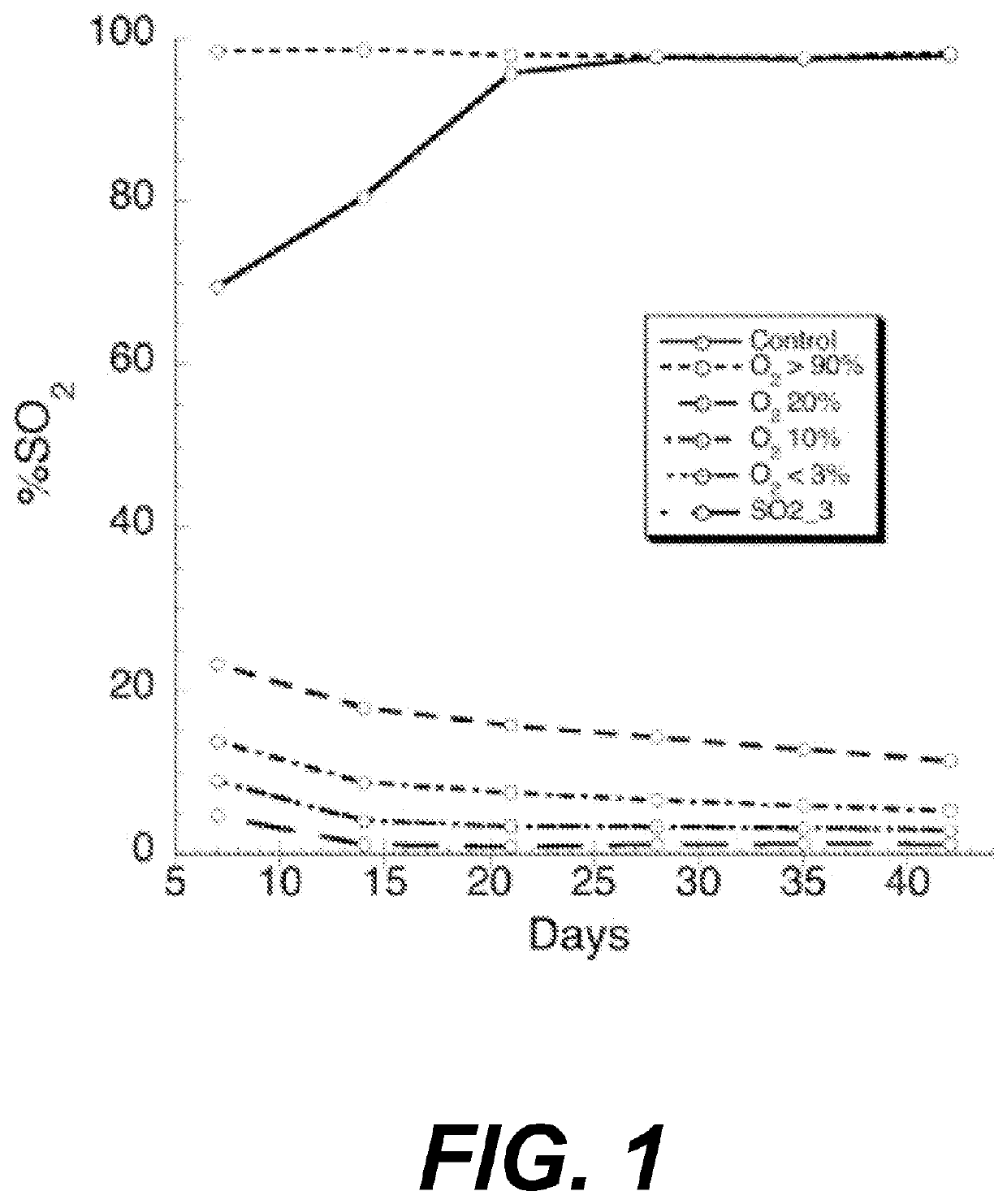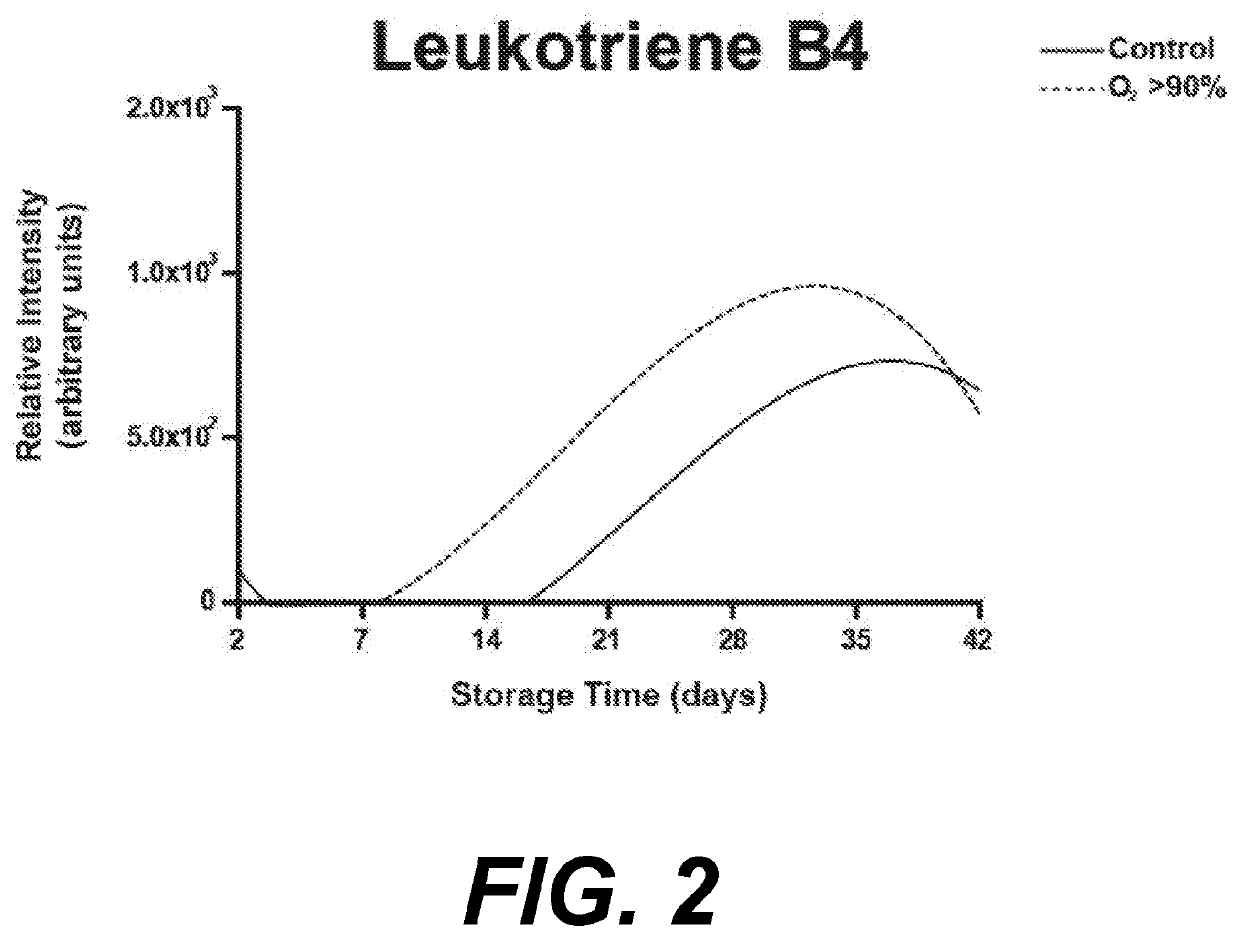Methods for managing adverse events in patient populations requiring transfusion
a technology for adverse events and patient populations, applied in the field of transfusion medicine, can solve the problems of delayed hemolytic transfusion reaction (dhtr), adverse reactions to transfused blood, and accumulation of cytokines, so as to reduce the risk of an inflammatory response, reduce the storage of blood, and reduce the level of at least one inflammatory factor
- Summary
- Abstract
- Description
- Claims
- Application Information
AI Technical Summary
Benefits of technology
Problems solved by technology
Method used
Image
Examples
embodiment 1
[0172]A method of reducing the risk of an inflammatory response in a human patient and in need of a blood transfusion comprising[0173]providing oxygen reduced stored blood for transfusion into a human patient in need of a blood transfusion having an increased risk of an inflammatory response, wherein said oxygen reduced stored blood has an initial oxygen saturation of 20% or less prior to being stored for a storage period and said oxygen reduced stored blood has reduced levels of at least one inflammatory factor when compared to non-oxygen reduced stored blood stored for an identical storage period.
embodiment 2
[0174]The method of embodiment 1, wherein said human patient and in need of a blood transfusion is selected from the group consisting of a surgery patient requiring a tissue perfusion bypass, a patient having chronic vascular inflammation, a patient having chronic inflammatory bowel disease, a patient having chronic obstructive pulmonary disease (COPD), a patient having sickle cell disease, a patient having thalassemia, a patient having organ failure, a patient having systemic inflammatory response syndrome (SIRS), a patient having diabetes mellitus, a patient having Bechet's disease, a patient having rheumatoid arthritis, a patient having smoke inhalation, and a patient having a combination thereof.
embodiment 3
[0175]The method of embodiment 2, wherein said human patient and in need of a blood transfusion has a reduction in the risk of a delayed hemolytic transfusion reaction, an injury from ischemia reperfusion, hypercoagulation, a transfusion related acute lung injury (TRALI), systemic inflammatory response syndrome (SIRS), multiple organ dysfunction syndrome (MODS), or a combination thereof.
PUM
 Login to View More
Login to View More Abstract
Description
Claims
Application Information
 Login to View More
Login to View More - R&D
- Intellectual Property
- Life Sciences
- Materials
- Tech Scout
- Unparalleled Data Quality
- Higher Quality Content
- 60% Fewer Hallucinations
Browse by: Latest US Patents, China's latest patents, Technical Efficacy Thesaurus, Application Domain, Technology Topic, Popular Technical Reports.
© 2025 PatSnap. All rights reserved.Legal|Privacy policy|Modern Slavery Act Transparency Statement|Sitemap|About US| Contact US: help@patsnap.com



